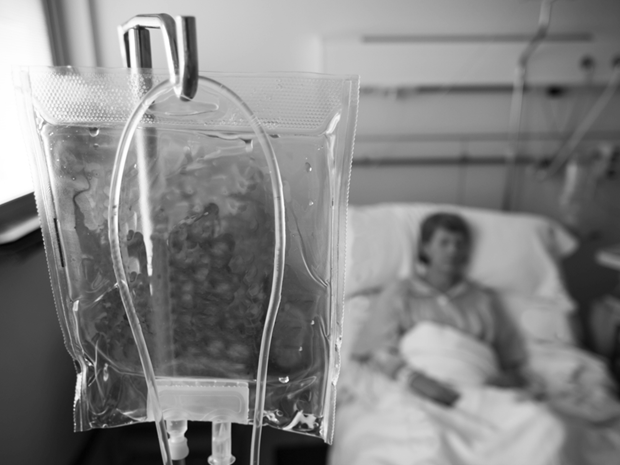A nurse is admitting a client to the emergency department after a gunshot wound to the abdomen.
Which of the following actions should the nurse take to help prevent the onset of acute kidney failure?
Administer IV fluids to the client.
Insert a urinary catheter.
Prepare the client for an intravenous pyelogram.
Initiate beta-blocker therapy.
The Correct Answer is A

Administering IV fluids can help maintain blood flow to the kidneys and prevent acute kidney failure.
Choice B is incorrect because inserting a urinary catheter does not prevent acute kidney failure.
Choice C is incorrect because an intravenous pyelogram is a diagnostic test and does not prevent acute kidney failure.
Choice D is incorrect because beta-blocker therapy is not used to prevent acute kidney failure.
Nursing Test Bank
Naxlex Comprehensive Predictor Exams
Related Questions
Correct Answer is C
Explanation
The nurse should place the client in a position with their feet elevated.

This position helps to increase blood flow to the vital organs and can help improve the client’s blood pressure.
Choice A is not the answer because the Reverse Trendelenburg position does not help improve blood flow to vital organs.
Choice B is not the answer because the side-lying position does not help improve blood flow to vital organs.
Choice D is not the answer because High-Fowler’s position does not help improve blood flow to vital organs.
Correct Answer is C
Explanation
The nurse’s priority for immediate intervention is tachypnea, which is rapid breathing.
Tachypnea can be a sign of respiratory distress and requires immediate intervention.
Choice A is wrong because while a fever may indicate an infection, it is not the priority for immediate intervention.
Choice B is wrong because while blood-tinged secretions may indicate bleeding, it is not the priority for immediate intervention.
Choice D is wrong because while IV infiltration may cause discomfort and require attention, it is not the priority for immediate intervention.
Whether you are a student looking to ace your exams or a practicing nurse seeking to enhance your expertise , our nursing education contents will empower you with the confidence and competence to make a difference in the lives of patients and become a respected leader in the healthcare field.
Visit Naxlex, invest in your future and unlock endless possibilities with our unparalleled nursing education contents today
Report Wrong Answer on the Current Question
Do you disagree with the answer? If yes, what is your expected answer? Explain.
Kindly be descriptive with the issue you are facing.
